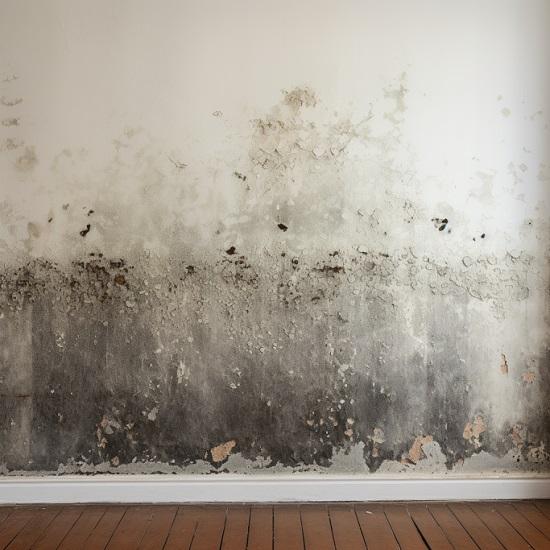Efficient Post Mold Remediation Cleaning Protocols
Efficient Post Mold Remediation Cleaning Protocols
Blog Article
Your Ultimate Guide to Message Mold And Mildew Removal Methods
Browsing the world of post-mold remediation techniques is a precise process that requires attention to information and a comprehensive understanding of the details entailed. In the results of mold and mildew problem, knowing exactly how to successfully remove the mold and mildew and avoid its reoccurrence is paramount for maintaining a healthy and balanced interior environment. From selecting the best cleansing and sanitizing techniques to executing techniques for long-lasting mold prevention, each step in the remediation trip plays a crucial role in guaranteeing an effective outcome. As we start this exploration of post-mold removal techniques, we will certainly discover the key techniques and finest techniques that can assist you recover your room to its pre-mold problem and safeguard it against future mold dangers.
Comprehending Post-Mold Remediation Process
After completing the mold removal procedure, it is essential to understand the post-mold removal techniques that are essential to ensure a effective and detailed cleaning. Once the mold and mildew has been gotten rid of, the next step includes cleaning and disinfecting the affected locations to prevent any type of regrowth of mold and mildew.
Moreover, carrying out a last examination post-remediation is vital to make sure that all mold has been successfully gotten rid of. This inspection should involve a thorough aesthetic check along with possibly air tasting to confirm the lack of mold spores airborne. Extra removal might be required if the examination exposes any lingering mold. Enlightening occupants on preventative procedures such as managing dampness degrees and immediately attending to any kind of water leaks can aid maintain a mold-free environment.
Effective Cleaning Up and Disinfecting Techniques

Stopping Future Mold And Mildew Growth

Importance of Appropriate Air Flow
Correct ventilation plays an important role in stopping dampness accumulation, an essential variable in mold growth within indoor atmospheres. Reliable air flow systems aid get rid of excess moisture from the air, minimizing the chances of mold spores locating the moisture they need to germinate and spread. Without adequate air flow, interior rooms can become a breeding place for mold and mildew, bring about prospective health and wellness dangers and architectural damages.
By making sure correct air circulation, air flow systems can also assist in drying wet locations faster after water damage or flooding incidents, even more deterring mold growth. Post Mold remediation cleaning. In rooms like bathrooms, cooking areas, cellars, and attic rooms where moisture degrees often tend to be higher, mounting and maintaining effective ventilation systems is vital in stopping mold and mildew infestations

Monitoring and Maintenance Tips
Given the important duty that correct air flow plays in protecting against mold and mildew development, it is important to establish reliable surveillance and upkeep suggestions to ensure the ongoing functionality of air flow systems. Normal evaluations of ventilation systems should be carried out to check for any kind of indicators of clogs, leaks, or breakdowns that might impede correct air flow. Tracking moisture levels within the building is additionally vital, as high humidity can add to mold growth. Mounting a hygrometer can assist track humidity degrees and sharp homeowners to any spikes that may need focus. Additionally, ensuring that air filters are routinely cleaned or replaced is important for maintaining the effectiveness of the air flow system. Executing a routine for regular maintenance tasks, such as duct cleaning and heating and cooling system examinations, can help prevent issues before they escalate. By staying mindful and proactive to see this site the problem of ventilation systems, homeowner can properly mitigate the danger of mold regrowth and maintain a healthy indoor environment.
Conclusion
In conclusion, post-mold removal strategies are essential for ensuring a secure and clean atmosphere. Understanding the procedure, implementing reliable cleansing and decontaminating techniques, stopping future mold and mildew development, preserving proper ventilation, and normal tracking are all crucial actions in the removal procedure. By following these standards, you can successfully eliminate mold and prevent its return, functioning or advertising a healthy living space for all residents.
In the consequences of mold problem, knowing how to efficiently eradicate the mold and mildew and stop its reoccurrence is extremely important for keeping a healthy and balanced interior setting. When the mold has been removed, the following step involves cleaning and disinfecting the influenced locations use this link to stop any type of regrowth of mold - Post Remediation verification. After eliminating noticeable mold and mildew growth, it is important to clean all surfaces in the affected location to eliminate any staying mold spores. To better improve mold a knockout post avoidance measures, it is necessary to address underlying concerns that initially led to mold advancement.Offered the important duty that appropriate ventilation plays in preventing mold development, it is critical to establish efficient surveillance and upkeep tips to make sure the ongoing capability of ventilation systems
Report this page